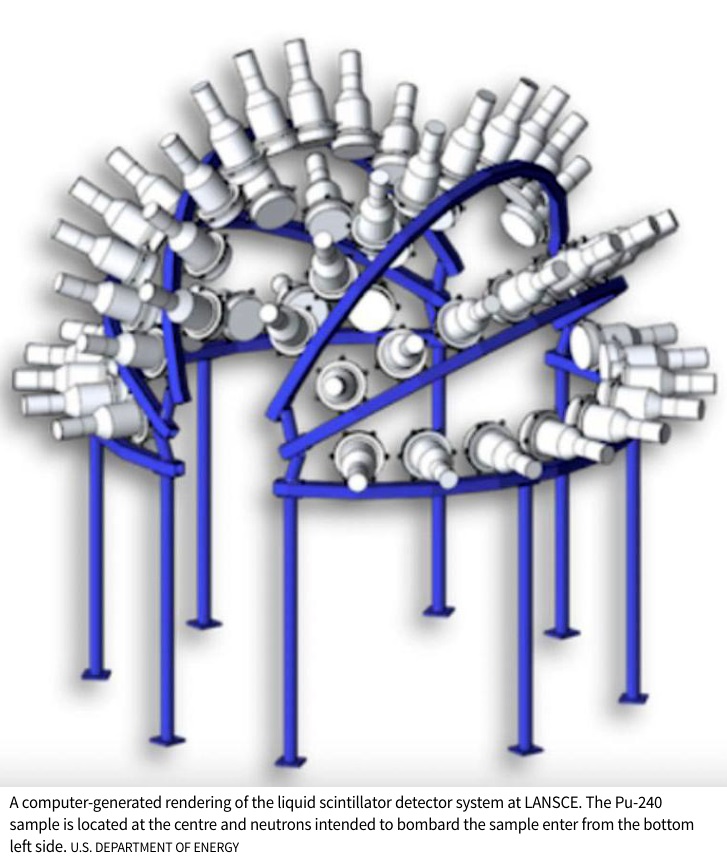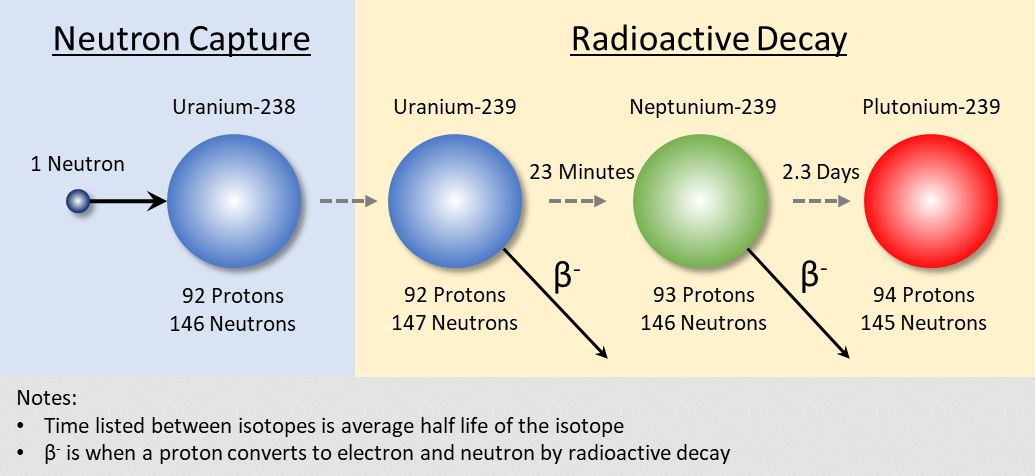From UPSC perspective, the following things are important :
Prelims level: Prompt Fission Neutron Spectrum (PFNS), India’s 3-stage Nuclear Power Program, Plutonium.

Why in the News?
Recently a study was conducted on Prompt Fission Neutron Spectrum (PFNS) by the US. This study holds significance for design updates in India’s second stage of its nuclear power programme.
India’s Progress in Nuclear EnergyOn March 4, India advanced to the second stage of its nuclear power programme by beginning the core-loading process of the Prototype Fast Breeder Reactor (PFBR) at the Madras Atomic Power Station in Kalpakkam. India’s 3-stage Nuclear Power Program:
|
What is Prompt Fission Neutron Spectrum (PFNS)?
- Definition: PFNS refers to neutrons emitted right after a Pu-240 nucleus captures a neutron but before it reaches a stable state.
- Previous Studies: To date, only one study has investigated PFNS for Pu-240-induced fission at 0.85 mega-electron-volt (MeV). Recently, researchers in the U.S. conducted a second study with neutrons of higher energy than 0.85 MeV.
- New Findings: The findings reveal significant differences between predicted and measured PFNS, aiding reactor designers and nuclear medicine practitioners.
About Plutonium-240 and its Fission
- Neutron Capture: When a Pu-239 nucleus captures a neutron, it can either undergo fission or become Pu-240.
- Pu-240 is common in nuclear reactors and nuclear weapon test fallout.
- Pu-240 Behavior: Pu-240 capturing a neutron typically turns into Pu-241.
- If Pu-240 undergoes fission, there’s uncertainty about the energy of its fission products.
- Current models use complex calculations to estimate this output.
Do you know?
|
Relevance of PFNS Study to India’s PFBR
- PFBR Use: The PFBR uses plutonium from CANDU (Canada Deuterium Uranium) reactor spent fuel, which contains Pu-240. Reprocessed PFBR spent fuel will also contain Pu-240.
- Importance of New Data: New data on Pu-240 behaviour is essential for improving reactor efficiency and safety.
Production and Characteristics of Pu-240
- Creation of Pu-239: Pu-239 is created when U-238 is exposed to neutrons in a reactor. As Pu-239 captures neutrons, it turns into Pu-240, which builds up over time.
- Spontaneous Fission: Pu-240 undergoes spontaneous fission, emitting alpha particles, and is considered a contaminant in weapons-grade plutonium, where its composition is kept below 7%.
- Reactor-Grade Plutonium: Plutonium with more than 19% Pu-240 is classified as reactor-grade.
Experimental Findings on PFNS
- Research at LANSCE: Researchers at Los Alamos Neutron Science Centre (LANSCE) conducted tests by bombarding a pure Pu-240 sample with neutrons of 0.01-800 MeV energy.
- Detection Setup: The setup included liquid scintillators to detect emitted particles, using a small Pu-240 sample to minimize alpha particle emission.
- Measurement Focus: They measured the energies of neutrons and other fission products, focusing on neutron-induced fission data.
PYQ:[2023] Consider the following statements:
Which one of the following is correct in respect of the above statements? (a) Both Statement-I and Statement-II are correct and Statement-II is the correct explanation for Statement-I (b) Both Statement-I and Statement-II are correct and Statement-II is not the correct explanation for Statement-1 (c) Statement-I is correct but Statement-II is incorrect (d) Statement-I is incorrect but Statement-II is correct |
Get an IAS/IPS ranker as your 1: 1 personal mentor for UPSC 2024

